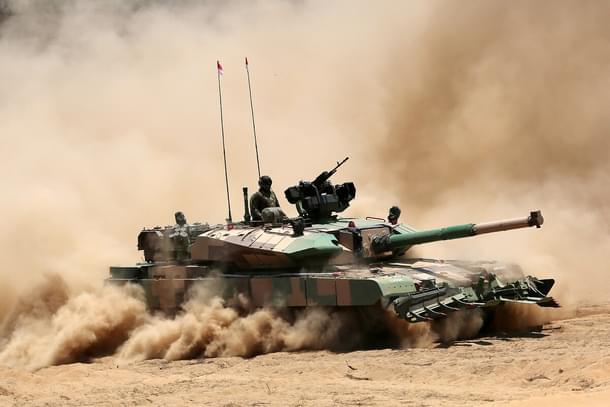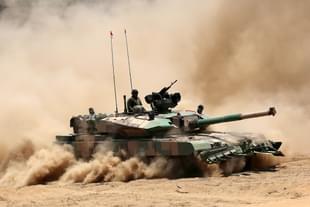Defence
All About Army's Integrated Battle Group That Modi 3.0 Is Likely To Take A Call On
Ujjwal Shrotryia
Jun 12, 2024, 05:16 PM | Updated 06:17 PM IST
Save & read from anywhere!
Bookmark stories for easy access on any device or the Swarajya app.


The Indian Armed Forces are undergoing an intense phase of reforms.
Theaterisation or Integrated Theatre Commands (ITC) is the single biggest and most significant reform in the history of independent India. This will see all three services jointly planning and pooling their resources to achieve a particular national objective.
Among these reforms, another less talked about but critical reform is the creation of Integrated Battle Groups (IBGs) instead of the traditional division based on Infantry, artillery, armoured, engineer regiments, etc.
IBGs entail creating a combined force which has equipment drawn from all arms, viz, armour (tanks and infantry fighting vehicles), artillery (105mm, 155mm howitzer or multiple launch rocket system like Grad, Pinaka or Smerch), air defence, signals (electronic warfare), etc.
These battle groups will consist of 6,000 to 7,000 soldiers, larger than 3,000 to 4,000 soldiers of a brigade (which is commanded by a Brigadier) and smaller than the 12,000 to 15,000 soldiers of a division (commanded by a Lieutenant General) and will be headed by a Major General rank officer.
The IBGs will also be terrain-dependent.
So, for instance, against Pakistan in the plains of Punjab and the desert of Rajasthan, the IBGs will be more armour and artillery heavy, meaning that these IBGs will have more tanks, tracked infantry fighting vehicles and large calibre artillery guns.
While the IBGs deployed against China and Pakistan in the mountains will have more infantry, light artillery guns and less armour.
The IBGs will make launching swift retaliation or even a sudden and surprise attack against Pakistan and China feasible, a far cry from the slow and steady response of the army’s strike corps, back in 2001 under Operation Parakram.
The army’s strike corps took a sweet time of almost a month to reach their deployment areas from their peacetime locations, limiting the effectiveness of India’s response by which time negotiations were done, and the formations instructed to return to their peacetime locations.
More importantly, these IBGs can mount a more coherent response or strike since the commander will have all resources, from tanks to artillery guns, air defence to attack helicopters, and unmanned drones to loitering munitions for reconnaissance to complete his task instead of asking for more resources from the division or corps reserves.
And since soldiers from all the arms will train together, there will be better integration and coherence between various arms within the IBGs.
Under the first phase of this project, the Indian Army has created two IBGs from 9 Corps, headquartered at Yol, against Pakistan. Under the second phase, five more IBGs were created from 17 Mountain Strike Corps against China in the eastern sector.
IBGs from both phases have been wargamed and validated in several exercises.
The army has also submitted a report of the first phase to the Ministry of Defence (MoD), and the government has asked the army to submit the report for the second phase as well.
After reports from both phases are submitted, the newly sworn-in Narendra Modi government is likely to take a call on the widescale operationalisation of this concept in the army.
Staff Writer at Swarajya. Writes on Indian Military and Defence.





